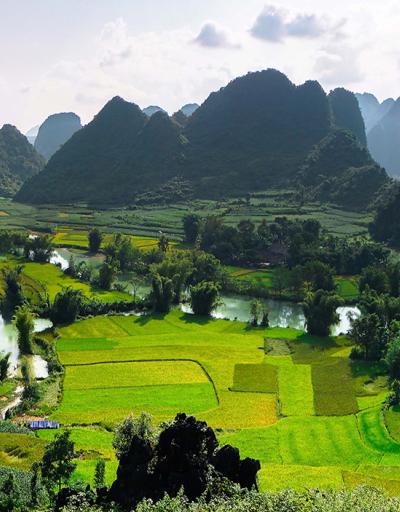
Kinabalu UNESCO Global Geopark

Mount Kinabalu dominates this geopark in the State of Sabah at the northern end of the island of Borneo. Covering an area of 4,750 km2, the geopark is home to many endemic plants and animals, including 90 orchid species that exist only on Mount Kinabalu, and the crimson-headed partridge bird not found anywhere else on Earth. Kinabalu Park, a World Heritage property inscribed in 2000, represents about 16% of the total area of the geopark.
Celebrating Earth heritage
The highest mountain lying between the Himalayas and New Guinea, Mount Kinabalu has been attracting explorers for over a century. The geopark features incredible geodiversity, including ultramafic rocks which are billions of years old; Ultramafic rocks make up the Earth’s mantle but sometimes rise to the surface during a volcanic eruption. Granite intrusions are also visible on the surface: during a volcanic eruption, most magma never rises to the surface but, rather, remains hidden inside the crust where it solidifies into intrusive igneous rocks like granite. The geopark also features unique landforms that include the Poring Hot Springs and the Ranau-Tambunan area, which consists of folded and faulted sedimentary rocks.
Sustaining local communities
The Kinabalu UNESCO Global Geopark is a significant site for geological research and education, and it offers visitors a unique opportunity to explore the geological history of Southeast Asia. Its distinctive position for the biota of Southeast Asia also adds to the site's ecological importance. It includes the Kinabalu Park World Heritage property.
The total population of the geopark is 291,300 living in more than 400 villages. The main economic activities in are highland agriculture, animal husbandry and tourism activities. Rice, cultivated in wet paddies on alluvial plains and in dry paddies in hilly areas, is the staple food.
Contact
- Tel: +60 88523500
- E-mail: maklarin.lakim@sabah.gov.my
- Postal address: Lembaga Pemegang Amanah Taman-Taman Sabah (The Board of Trustees of Sabah Parks), Lot 45 & 46, Tingkat 1-5, Block H Signature Office, KK Times Square, Coastal Highway, 88100 Kota Kinabalu, Sabah Malaysia, Peli Surat 10626, 88806 Kota Kinabalu, Sabah Malaysia

